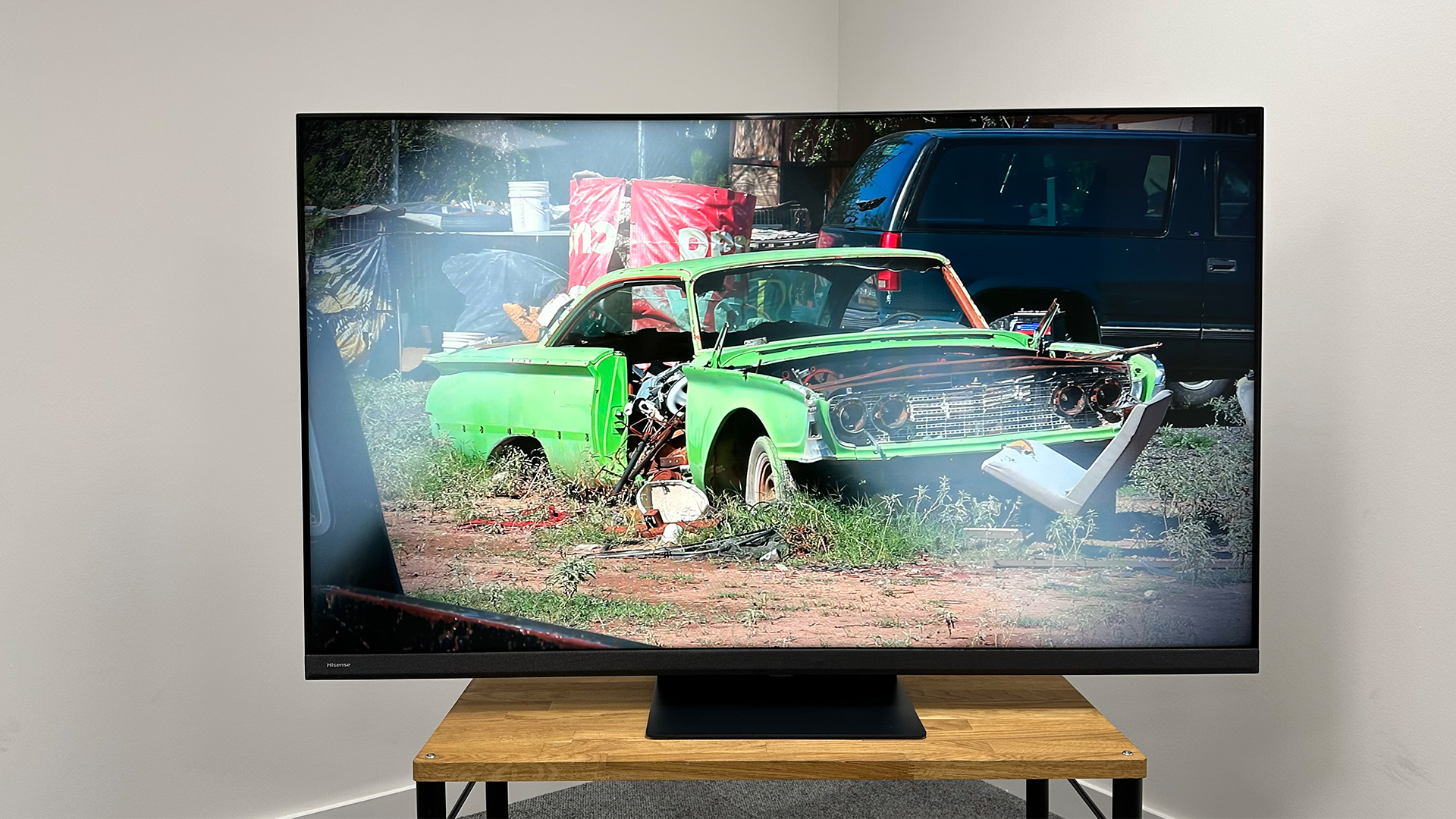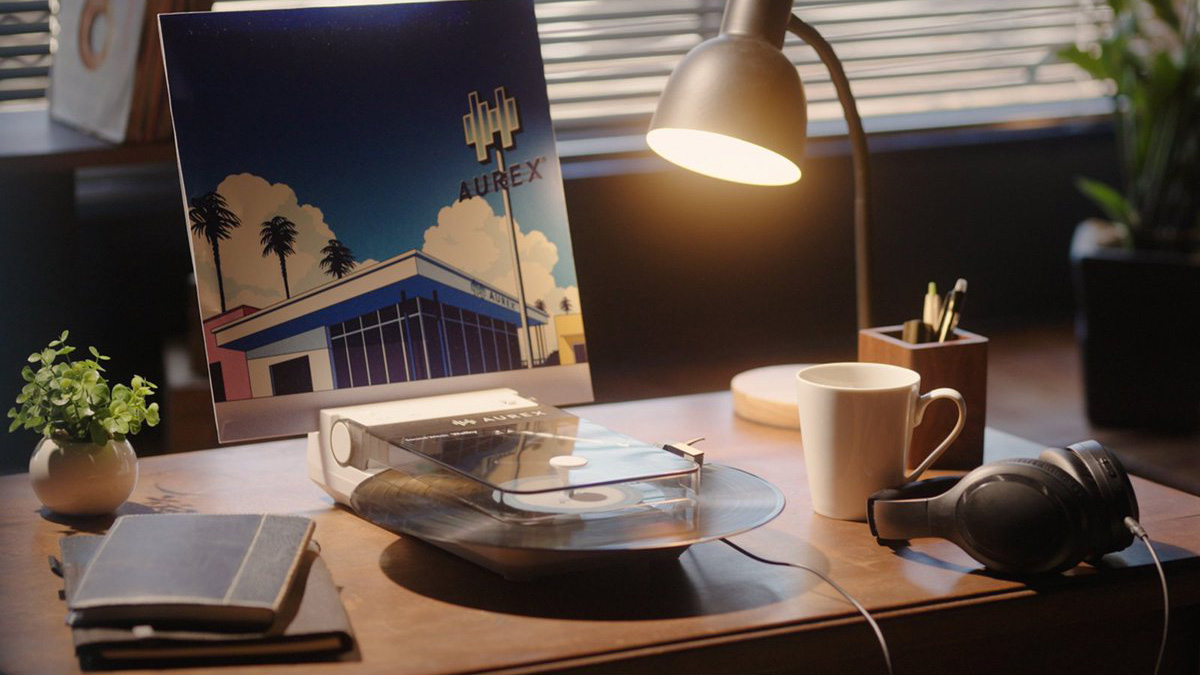What Hi-Fi? Verdict
At full price, Hisense’s U8K Mini LED TV is a strong option – find it discounted and it could be a fantastic buy
Pros
- +
Balanced and consistent picture
- +
Weighty, engaging sound for this price
- +
Responsive interface
Cons
- -
Not as bright or contrasty as the best
- -
Slightly murky low-light scenes
Why you can trust What Hi-Fi?
While perhaps not yet a household name (in the UK, at least), Hisense has carved a name out for itself in the TV world for producing high-spec models at aggressive prices. The company clearly has ambitions to usurp the likes of Samsung, Sony and LG at the top of the premium TV tree, though, and the U8K, its top mainstream Mini LED model for 2023, is perhaps the best evidence yet that those established brands should be looking over their shoulders.
Price
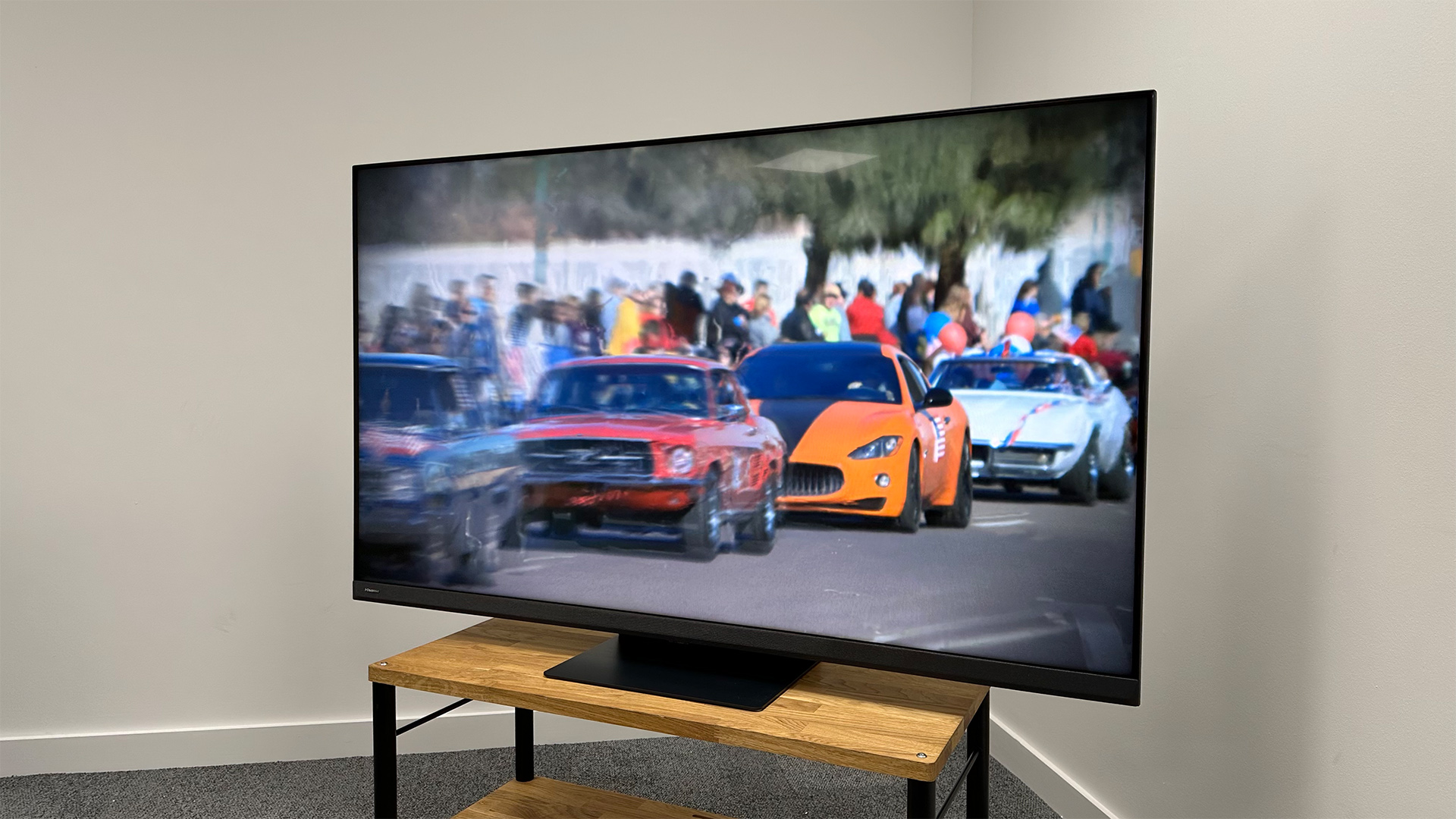
While the U8K sits at the top of Hisense’s current Mini LED range (a flagship UXK model is due later this year), it still looks like good value when compared with the TVs of most brands. We’re reviewing the 65-inch model here (the 65U8K), which launched at £1699 / $1699 / AU$2499. That price has already come down massively in the States, where the TV has been on sale for a little while, and we hope and expect that discounts will appear for the UK and Australia, too.
It’s quite important that they do, because the U8K’s most obvious current rival is the Sony X90L, which is currently priced at £1699 / $1298 / AU$2995, and which outperforms its spec sheet with superb picture quality.
Design
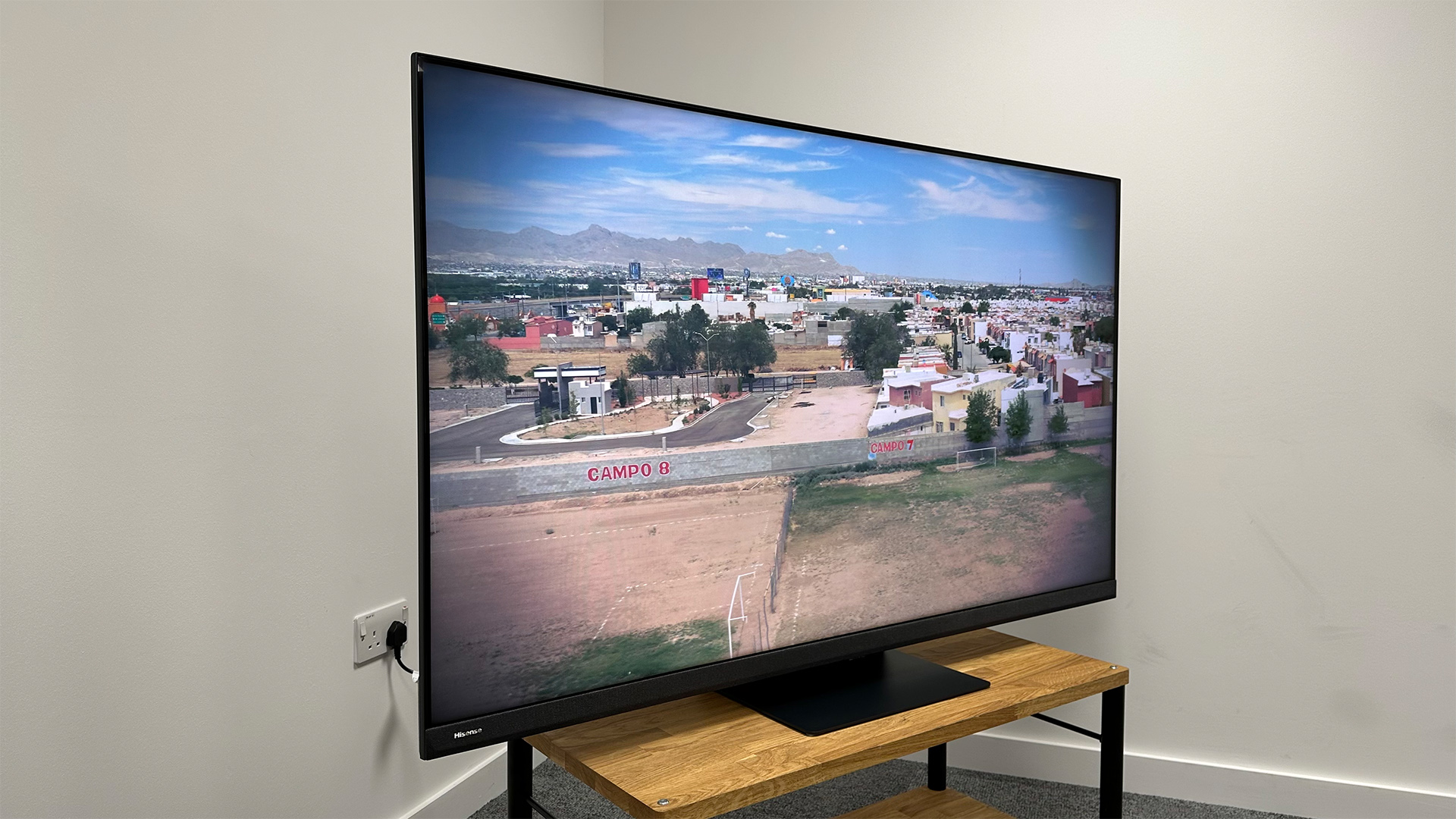
Viewed head-on, Hisense has got a lot right with the design of the U8K. The thin metal frame and fabric-covered bottom edge that houses the front-firing speakers give the TV a premium look, and the centrally mounted metal pedestal is both narrow enough (at 40cm) and thin enough (about 6mm) to make it relatively easy to position a soundbar – though it is worth noting that there’s only about 9.5cm between the bottom of the screen and the furniture upon which the TV is placed.
It's also worth noting that this rather neat pedestal stand is exclusive to Europe: U8Ks bought in the US and Australia will come with feet instead.
The back of the TV looks and feels much cheaper than the front, and the rear-facing subwoofer looks more like a fan at first glance, but if you’re spending any significant time looking at the rear of the TV, something has gone rather wrong.
While it features Mini (as opposed to standard) LEDs, the U8K’s backlight prevents it from offering OLED levels of thinness, but at 7.7cm, it’s far from the thickest TV of this type.
Features

Around the back of the TV, mostly facing sideways, you’ll find an array of connections that includes an optical out, a proper 3.5mm headphone socket, two USBs and four HDMIs.
Of those four HDMIs, two are standard and two are HDMI 2.1 spec. Those two higher-spec HDMIs support 4K/120Hz, VRR and ALLM gaming features (in fact, the TV can support 144Hz refresh rates, which are of no use to console gamers but will appeal to some PC players), and the TV also has a Dolby Vision game mode that goes right up to 4K/120Hz. There’s also a dedicated Game Menu that puts game-related settings at your fingertips. Unfortunately, one of the two HDMI 2.1 ports is also used for eARC, so if you need that in order to connect a soundbar or AV receiver, you’re going to have just one left that can handle everything that a PS5, Xbox Series X or gaming PC can throw at it.
We’ve already mentioned Dolby Vision, and the U8K also supports HLG, HDR10 and HDR10+. Support for all four of the major HDR formats isn’t unheard of, but it’s not something that Samsung, LG or Sony offer on any of their TVs.

Screen size 65 inches (also available in 55in, 75in)
Type Quantum Dot LCD
Backlight Mini LED
Resolution 4K
HDR formats HLG, HDR10, HDR10+, Dolby Vision
Operating system Vidaa (UK and Australia), Google TV (US)
HDMI inputs x4 (2 x 48Gbps HDMI 2.1)
Gaming features 4K/120Hz, VRR, ALLM, Dolby Vision game mode
ARC/eARC eARC
Optical output? Yes
Dimensions (hwd, without stand) 86 x 145 x 7.8cm
Rather bizarrely, the U8K runs the Google TV operating system in the US but Hisense’s own Vidaa platform in Australia and here in the UK. One might assume that those outside the US are getting the bum deal, but Vidaa is pretty good these days – a little basic compared to Google TV and the bespoke operating systems of the latest LG and Samsung TVs, but logically laid out and exceptionally snappy in use on the U8K.
Vidaa also features almost every streaming app of note, and each one plays in 4K with Dolby Vision or HDR10+ (both, in the case of Prime Video) if it should. The only major disappointment is that Vidaa has an Apple TV+ app rather than the full Apple TV app, which means it misses out on the pay-as-you-go movie store. This is comfortably the best digital movie store, so its omission here is a real shame. In the UK, Freeview Play is on board, and you can also access all of the terrestrial channel catch-up apps individually if you prefer. BT Sport and Now are both absent, though.
In terms of actual display technology, the U8K combines Quantum Dots with a Mini LED backlight in a similar way to Samsung’s Neo QLED models. Hisense claims the TV can hit a peak brightness figure of 1500 nits and that the 65-inch model has 1008 individual dimming zones (the 55-inch model has 672 and the 75-inch version 1056). That's over six times the number of zones that last year's U8H had. Now that's progress – the kind of which should help the U8K achieve strong contrast with minimal blooming.
Picture

We kick things off with the 4K Blu-ray of Top Gun: Maverick, the bright, rich qualities of which should well suit the Hisense’s Quantum Dot plus Mini LED panel technology. Colour us a little surprised, then, that the U8K is a fair bit less bright and punchy than the Sony X90L, which uses standard LCDs and LEDs. Admittedly, this is in the most accurate Filmmaker Mode (the Sony is in its equivalent, called ‘Custom’), but as we switch between the set’s various presets we find that each one is either a bit subdued or slightly overdone. After much experimentation, we settle on Filmmaker Mode but with the Advanced Contrast Enhancer set to Medium for a little extra pop. You could alternatively start with the HDR Day preset and turn off most of its active processing.
Suitably tweaked, the U8K starts putting in the sort of performance we were hoping for. There’s a lovely warmth to the movie’s sunsets (have you noticed that it almost always seems to be golden hour in Top Gun Land?) and sunlight sparkles off the rolling ocean in a very attractive fashion. It feels as though there’s a little more red to the picture than is truly accurate, but not in a way that looks unnatural. On the contrary, the slight extra rosiness lent to skin tones is actually very pleasant, and they still exhibit plenty of subtlety in terms of shading so remain realistic.
This isn’t a movie with lots of dark scenes, but those that it does have – the mach 10 test at the start, for example – demonstrate that the U8K is capable of reproducing very deep blacks that are almost as convincing as those of an OLED TV. Colours do lose a little of their vibrancy in these dark scenes, though.
Of course, the promise of a Mini LED backlight with a huge number of individual dimming zones is high contrast, so it's interesting to discover that the Hisense U8K is quite reserved when asked to handle the white text on a black background that kicks off Maverick and Blade Runner 2049. The TV is admirably controlled, with practically no blooming around the white text and no obvious overall inconsistencies in the backlight, but the Sony X90L achieves the same feats while reproducing the white text with significantly more pop – and all with a backlight that’s much less advanced, at least on paper.
Sticking with Blade Runner 2049, we’re impressed by the overall balance of the picture. It doesn’t constantly blow you away with dynamism and spectacle, but it provides the kind of consistent and controlled performance that means you can be fully engrossed in a movie without being distracted by the way the TV is reproducing it.
The U8K’s only significant flaw here is that certain dark scenes are a little murky and ill-defined. The overhead shot of LA as K flies to the police precinct is a good example, with the buildings below lacking some solidity and coming across as a bit grey and mushy. It’s not that the TV generally struggles with dark detail, but more that it doesn’t have the sharpness, low-light definition or motion handling of a genuinely exceptional model such as the Sony X90L.
Switching to the 1080p Blu-ray of True Grit, the Hisense again puts in a performance that’s perhaps a little less punchy and dynamic than the spec list might suggest, but is balanced, consistent and mature. There are no obvious, distracting flaws or errors in its reproduction, and before we know it we’ve sat through the entire movie for the hundredth time. The U8K does a good job of suppressing picture noise while preserving intentional film grain, too.
Sound
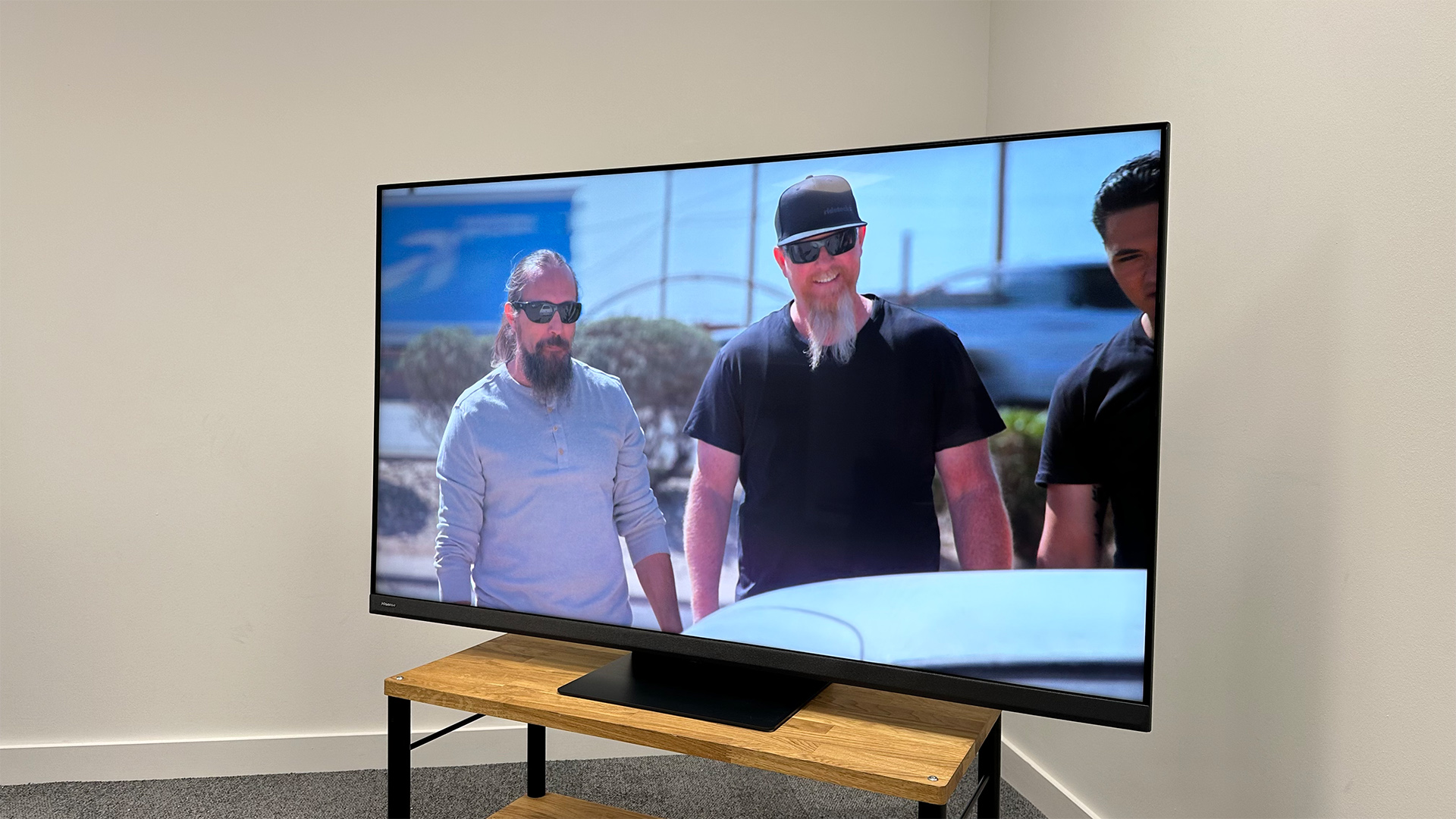
Returning to chapter 2 of Blade Runner 2049 for our usual sonic stress test, the U8K proves a pleasant surprise. It’s not completely fuzz-free as it attempts to recreate the almost sub-sonic bass frequencies of the soundtrack, but it’s significantly more composed than a lot of other TVs we’ve tested this year while also producing much weightier and deeper bass than is offered by Sony’s recent models, including the X90L.
That weight combines with good dynamic range (by TV standards) to effectively deliver the dramatic build-up to K’s ‘baseline test’, and the TV has enough treble control to recreate the insistent whistle during the test without veering more into harshness than it should.
Voices have a nice weight to them and they’re projected well into the room, but the TV also does a good job of creating atmosphere by pushing effects out to the sides and above the screen.
A little extra fine detail wouldn’t go amiss, and low-level dynamics are lacking somewhat, so this isn’t the most subtle of deliveries, but for a TV at this price, the U8K sounds good.
Verdict

The U8K is a real step forward for Hisense and almost certainly the best TV we’ve reviewed from the brand. It’s perhaps not quite as spectacular as the spec list might suggest, but the care that Hisense has taken in producing a balanced, authentic and consistent performance is clear and suggests it probably won’t be long before the company is challenging the established leaders at the premium end of the TV market.
The one big reason to not buy the Hisense U8K right now is that, in the UK at least, it’s the same price as the Sony X90L, which produces a more thrilling and even more authentic picture despite its less impressive spec sheet.
Should it end up on the receiving end of some good discounts, and we’ve every reason to believe that it will, the Hisense U8K will become a bit of a bargain.
SCORES
- Picture 4
- Sound 4
- Features 4
MORE:
Read our review of the Sony X90L
Also consider the LG C2
Read our Samsung QN95C review
Tom Parsons has been writing about TV, AV and hi-fi products (not to mention plenty of other 'gadgets' and even cars) for over 15 years. He began his career as What Hi-Fi?'s Staff Writer and is now the TV and AV Editor. In between, he worked as Reviews Editor and then Deputy Editor at Stuff, and over the years has had his work featured in publications such as T3, The Telegraph and Louder. He's also appeared on BBC News, BBC World Service, BBC Radio 4 and Sky Swipe. In his spare time Tom is a runner and gamer.
- Lewis EmpsonSenior Staff Writer
